USA. Part IV. NYC—SFMapDecember 30, 2007 — January 11, 2008 New YorkMap
New York is where I’d move to if Moscow ever got flattened by a giant asteroid. I briefly considered ringing in the New Year in Times Square, but quickly abandoned the idea: in order to get a spot, you have to show up at 4 p.m., and the earliest you’d be able to leave is 3 a.m. (if you’re lucky). Thanks but no thanks. The water towers on the roofs of the skyscrapers are the city’s second most distinctive feature after the skyscrapers themselves. Legions of tin men standing guard. 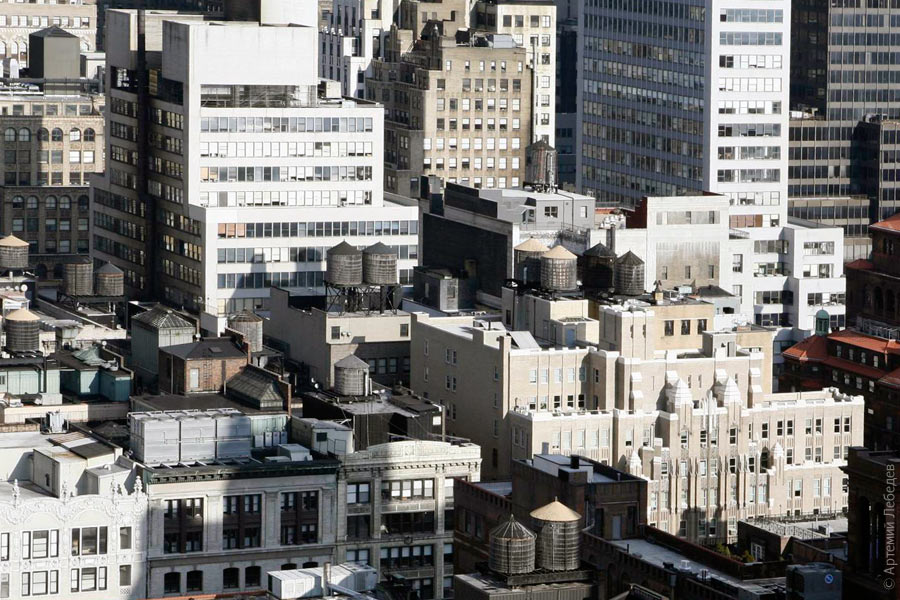 On January first, I went to rent a car. The great thing about America is that absolutely everyone drives here. So everyone has a driver’s license. Even those who failed (or never took) the driver’s exam can get a license, it’ll just be a different kind that doesn’t authorize them to operate a vehicle. But you can drive here even if you show up at the car rental office with a piece of paper that says “Let me drive!” on it. The entire city is covered with blobs of chewing gum. 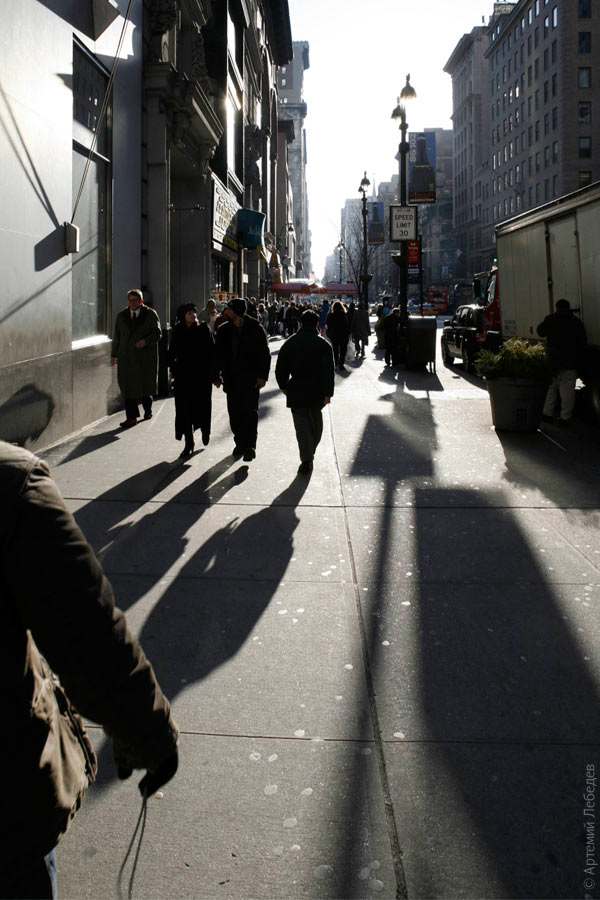 The black guy behind the counter at Dollar Rent A Car carefully studied the list of countries whose citizens were allowed to rent a car. Russia was not on this list. For a moment, it seemed like my entire trip might be doomed. But—lo and behold! The clouds of doom parted and the sun shone once again. The USSR was on the list. This is January 1st, 2008, may I remind you. The city’s lampposts are covered with parasites: various signs, warnings (don’t honk— penalty), beacons. This one has also sprouted a fire alarm light from its top.  The next step was to choose a car. Since I can’t stand sedans in general, I opted for a Jeep Wrangler. The agent not-so-subtly hinted that he could easily give me a better car for the same price, as long as a tip was to be expected. All he had to do was tell the computer system that they didn’t have what I asked for, so they had to give me a Chrysler Aspen, which normally costs one and a half times as much. Sure thing, man! Ten years ago, there were big mesh trash cans on every street corner here. Everything’s changed since then, especially the level of consumption. Now big piles of trash bags collect along the sidewalks by evening. 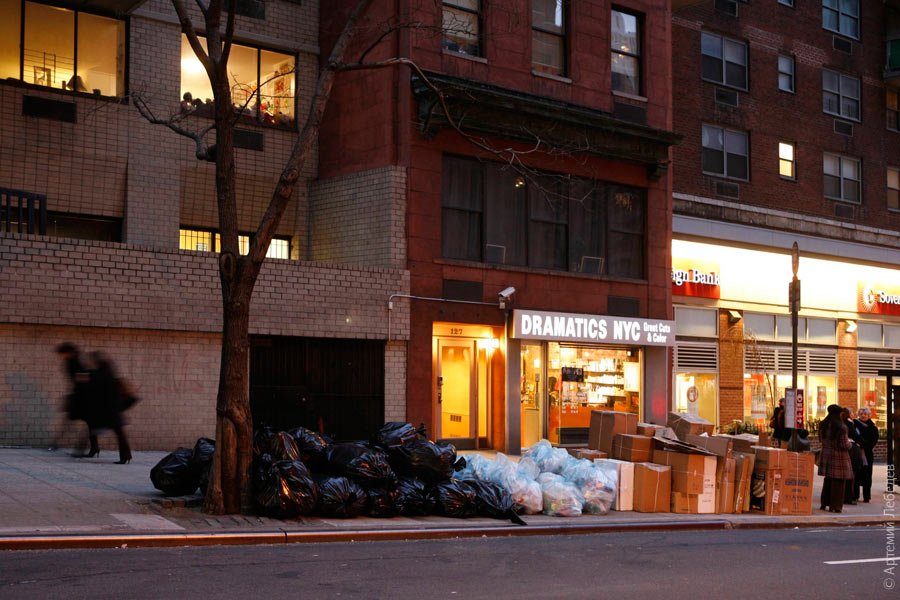 Since there were cameras all over the place, I tucked the hundred-dollar bill into my palm and passed it to the guy through a handshake—why get him in trouble? Have a safe trip, yo. I’m accustomed to European cities, to their layout, architecture, the typical location of mainstream cultural attractions, lodging, and food spots. I’m accustomed to cities organized similarly to European ones—from Tokyo to Ulan-Bator. Travelers who come to America will be met with disappointment. Every city has a main street, of course. It’s called Main Street. There’s usually a Market Street which runs parallel to it. These are intersected by First, Second, Third Street, and so on. And that’s it—there’s nothing else in the cities. RichmondMapMost American cities contain a few skyscrapers built in the 1920s and 30s, monuments to an era of great expectations and even greater downers. Richmond kept the expectations going for another spell the 80s, adding a few sterile-looking glass towers to the nice old ones. This is the cradle of American democracy: a half-deserted, predominantly black city. Progress has a cruel sense of humor: the little men on the traffic lights are all white. 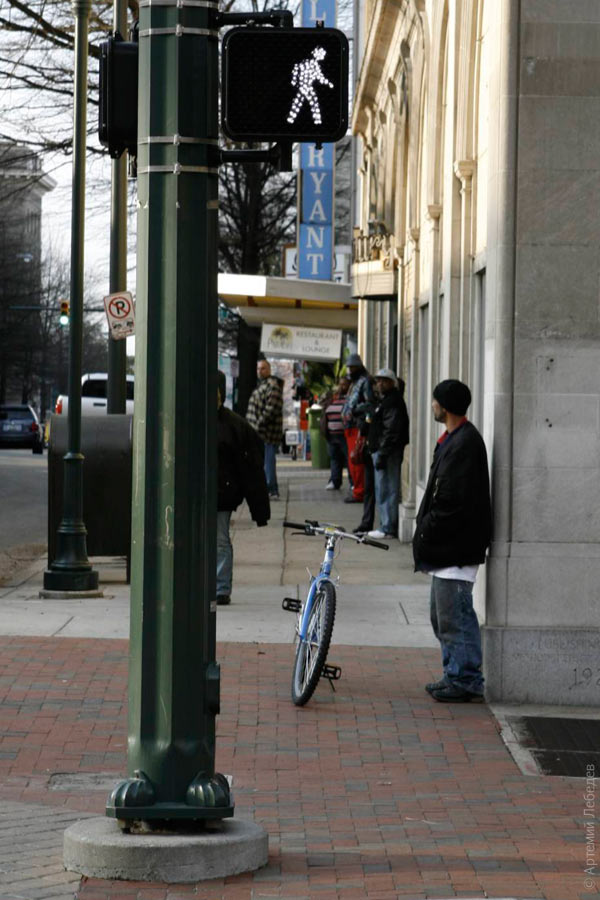 CharlotteMapThe first thought that comes to mind is that they tried to clone Frankfurt. The second thought is that they succeeded. Charlotte is exactly the same sort of sleepy provincial town. 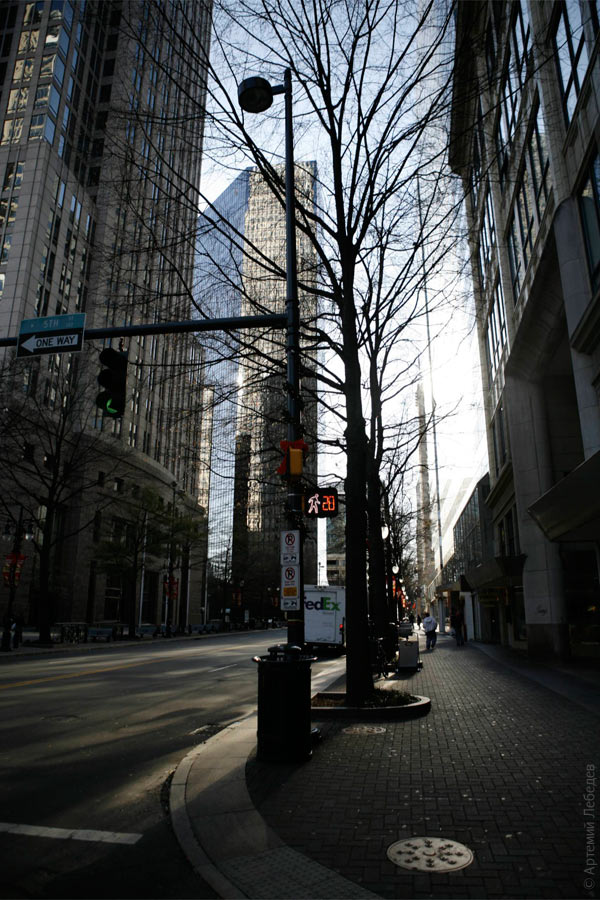 For some reason, the metal curb faces for storm drains were made in India. Was it really worth all the trouble of shipping them over? 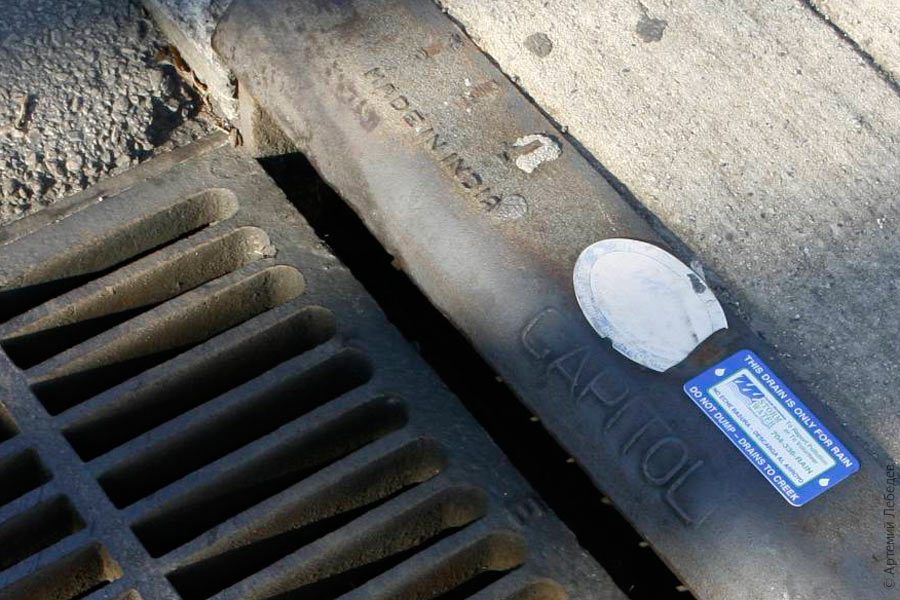 AtlantaMap
After the Olympics were held here, Atlanta was left with a few stadiums and a bunch of high-rise hotels. No one has any idea what to do with so many high-rise hotels now—they’re all vacant. There are also a few office buildings, recognizable by their walkways. This is a new corporate American trend: office buildings are linked with walkways so that men in suits don’t have to suffer the inconvenience of going outside. 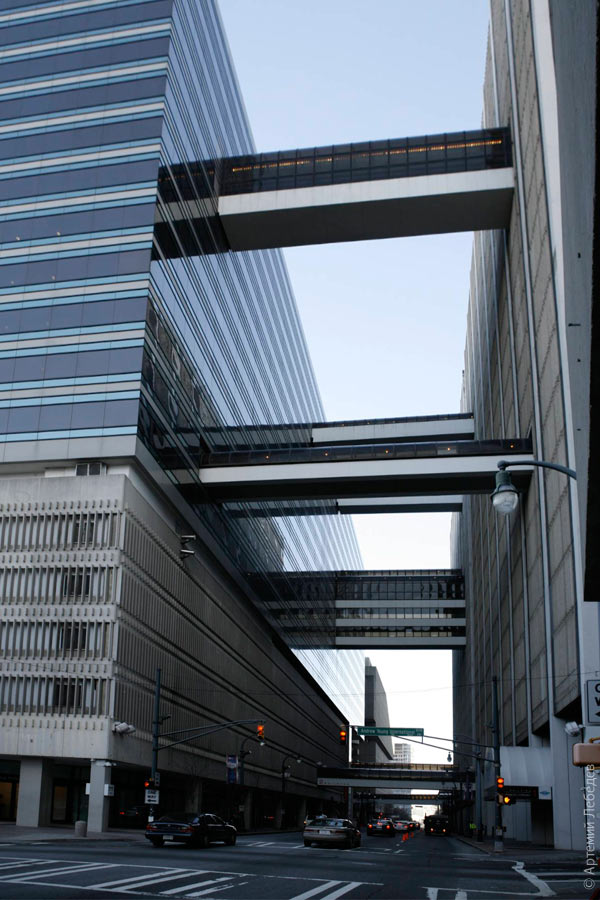 The water pump in the middle of the sidewalk is much more elegant than the ones you see in Ryazan. This one’s practically a musketeer sword. 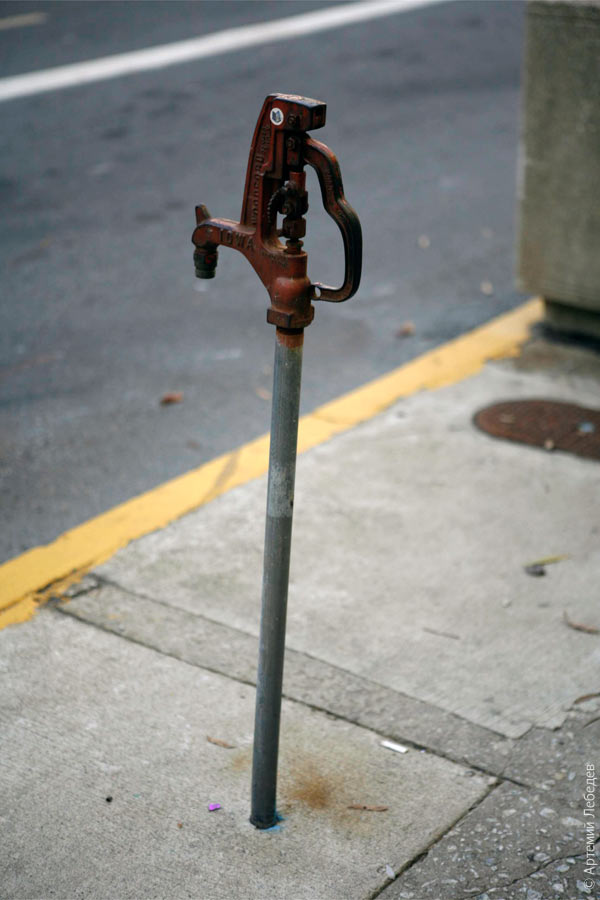 New OrleansMapThe French Quarter is slowly getting back on its feet after the hurricane. 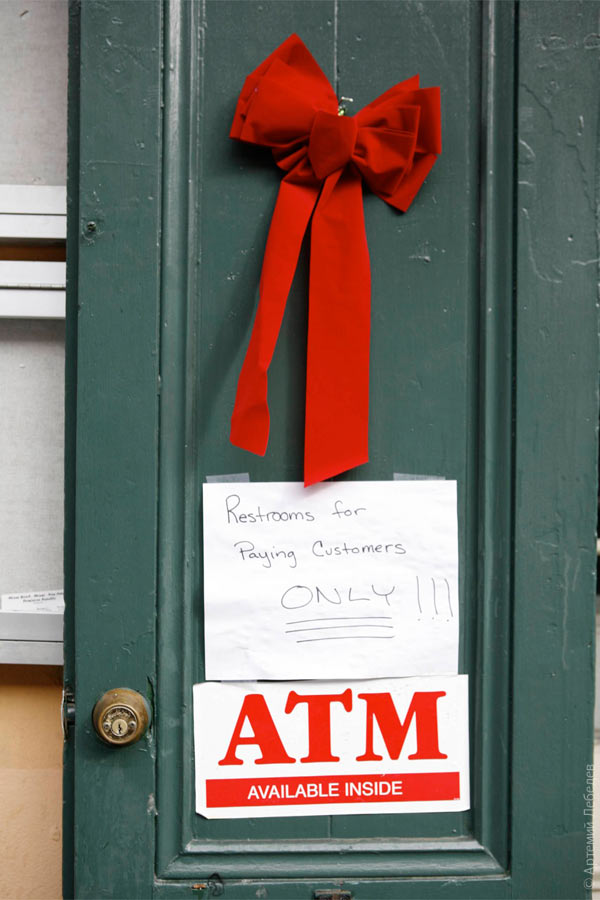 The traditional shows, not so traditional for other parts of America, are up and running again. 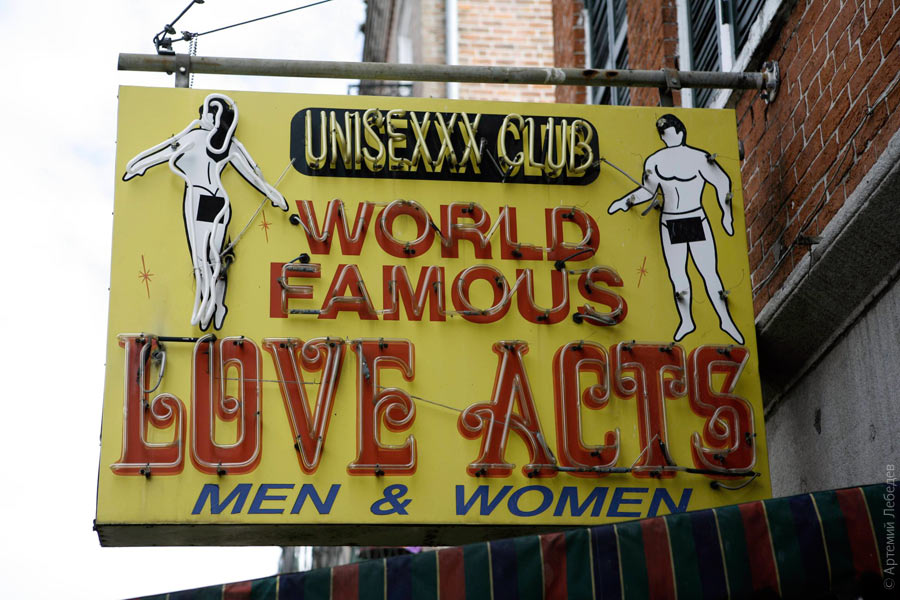 Some people have acquired new house pieces (prefab homes like these are delivered on trailers). 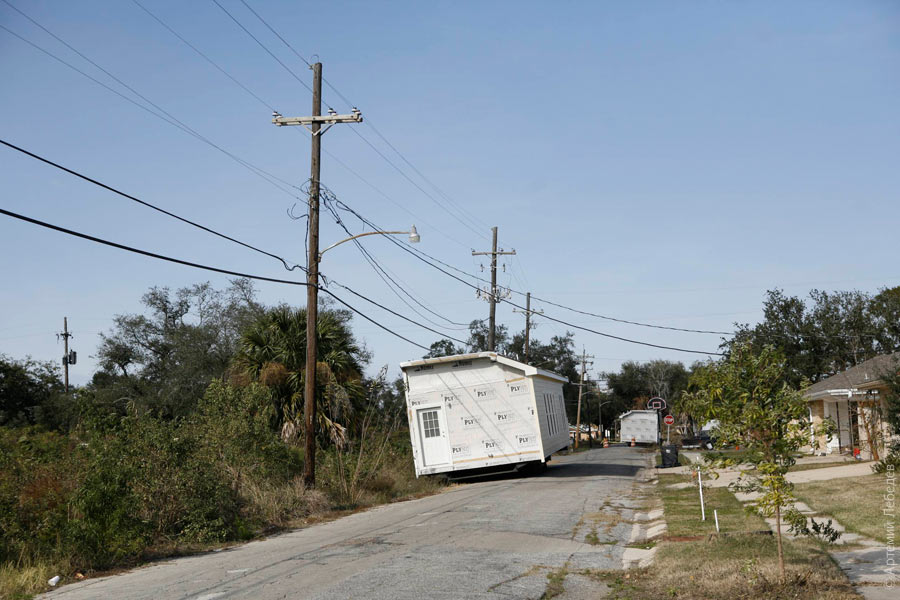 Some wised up after the flood and rebuilt their homes on stilts. 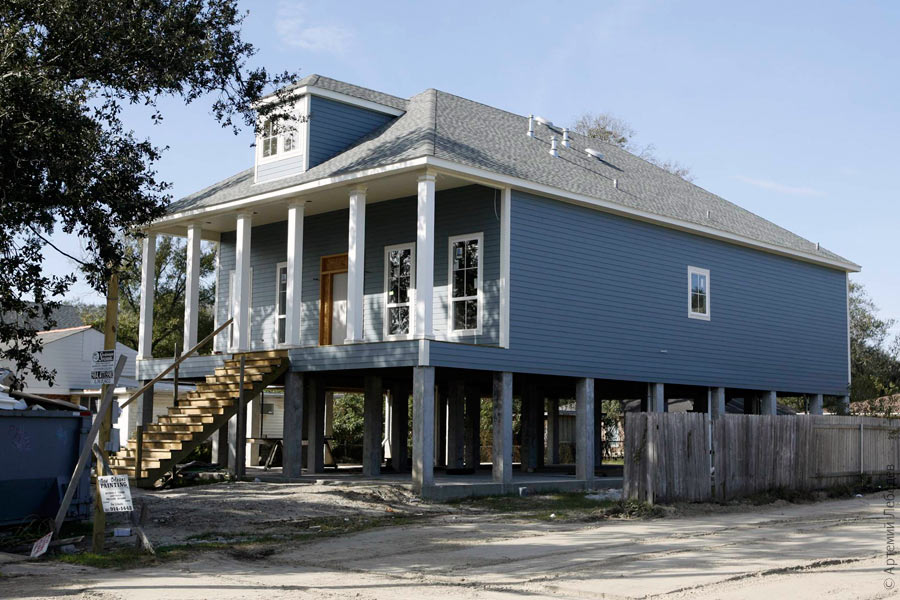 But many simply didn’t return. Their homes sit vacant, partially looted, with signs prohibiting dog fights on the walls. 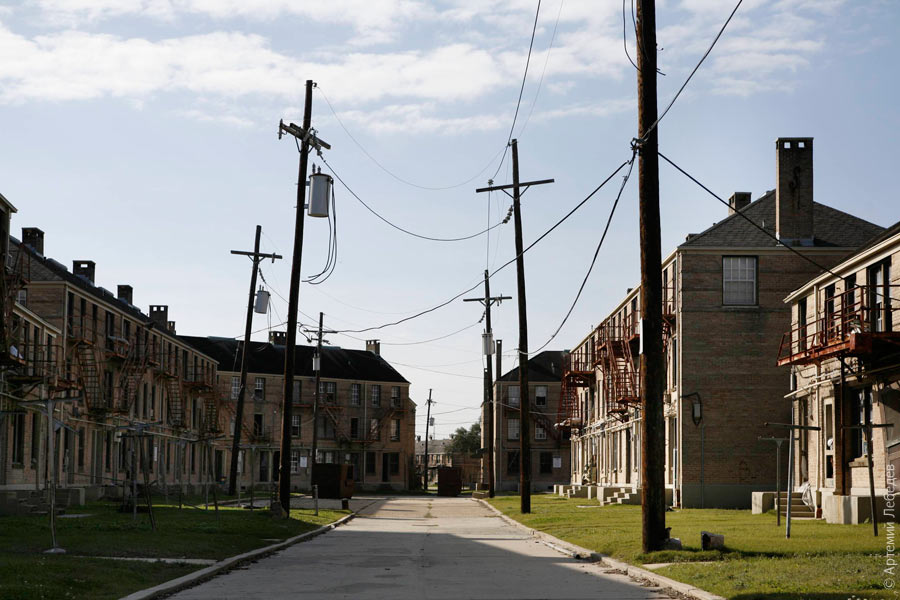 DallasMapDallas looked underpopulated on a quiet Saturday afternoon. But that’s just because it was the weekend. 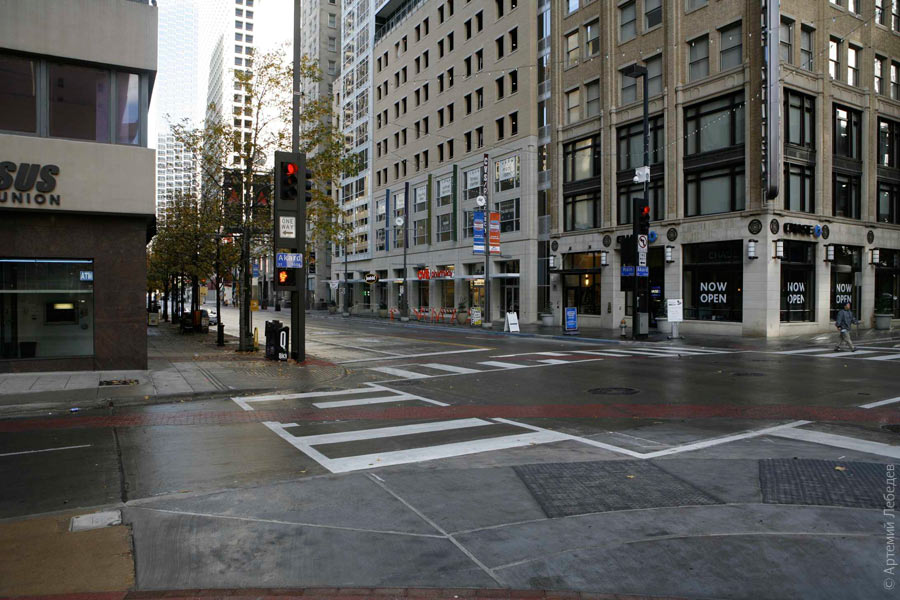 Since I don’t have anything else to show about Dallas, I’ll talk about it instead. America used to be like every other place: the masters lived in the center of the city, the servants occupied the outskirts. When serfdom segregation was abolished, the restrictions on where black people could live were lifted, and they started moving into the downtown areas. The whites didn’t like this turn of events one bit—it’s not easy to get used to overnight, after all. So they all fled to the suburbs, buying up property and settling in clusters. There are actually very few mixed-race neighborhoods in the country, despite all propaganda to the contrary. So anyway. Eventually the only thing left downtown was offices. This is why the streets of a typical American city are generally empty except at the beginning of the workday, at lunch, and at the end of the workday. You also have to remember that everyone drives everywhere. The US officially ranks third in the world in terms of population size after China and India. But outwardly it looks as though the entire country has died out. TexasMapThere was little time left to spare before the expo in Vegas, so I sped along at full steam—although my exhaust emissions were actually reduced thanks to the oxygenated gasoline in my tank. I had to breeze through Texas without delay. It usually only takes me a second to figure out if I like a place or not. But Texas is something special. It merits a separate visit, to be explored on the rights of a full-fledged country.  El PasoMapA godforsaken hole on the Mexican border.  TucsonMapA godforsaken hole above the Mexican border. 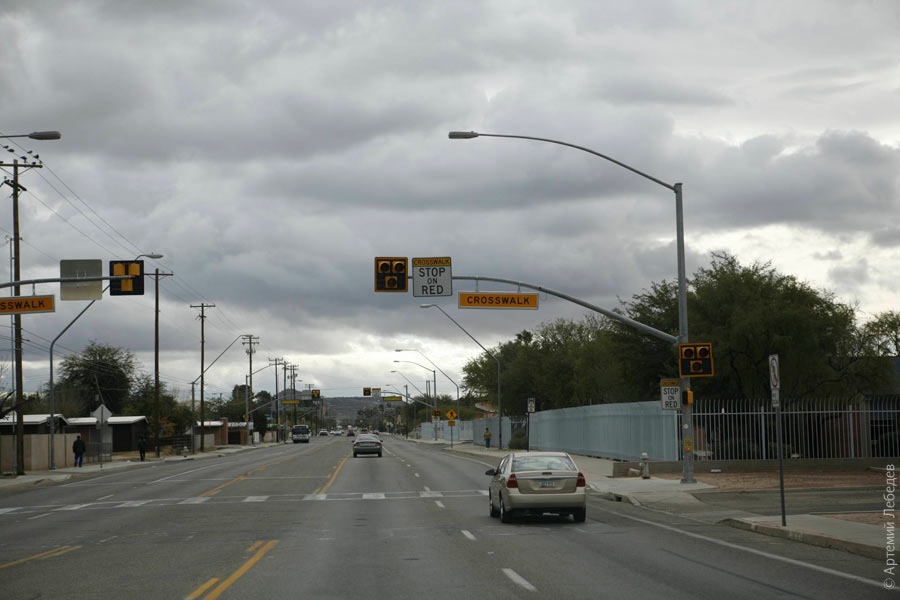 PhoenixMapHere you can clearly see how most American cities are set up: two-story houses with an empty lot behind them, followed by an auto repair shop, followed by a dozen high-rises. That’s it. 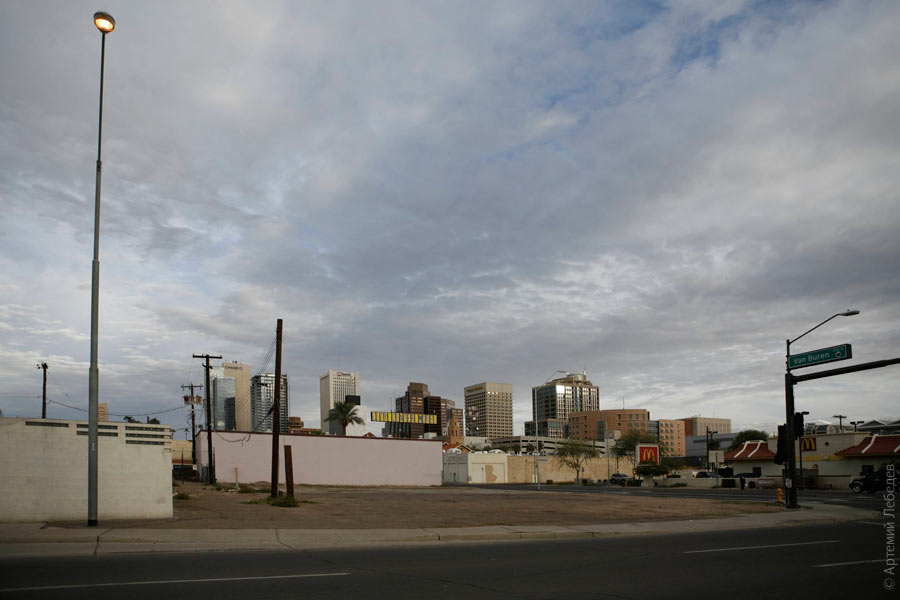 You can also clearly see that the streetlights are kept on even during the day. This is the case in practically all American cities. Las VegasMap
Half a century ago, developers descended upon a fairly impoverished one-story town in the middle of the Nevada desert and built a bunch of casinos and hotels along a two-kilometer stretch of its central strip. 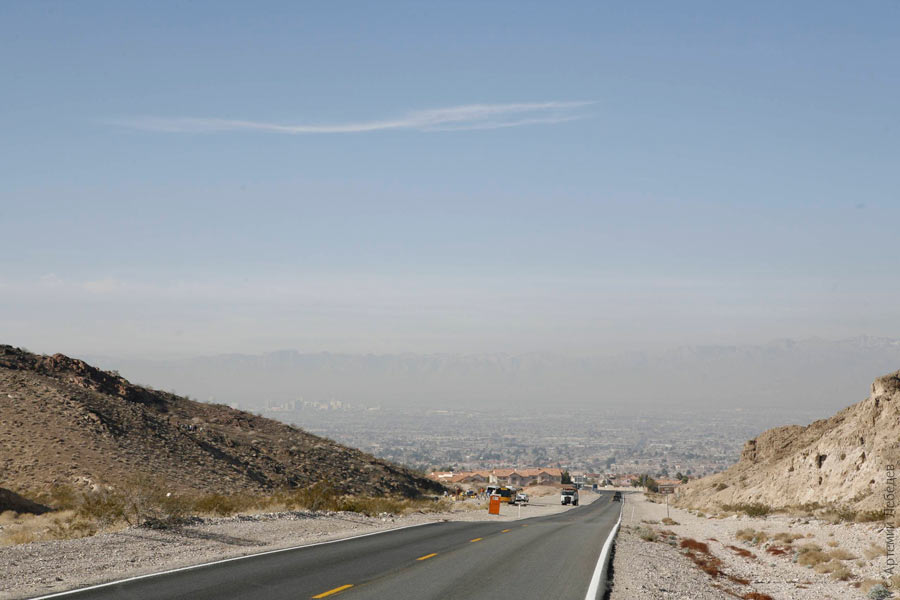 It’s difficult to describe just how pointless the existence of this entire place is. Everything here is a temporary prop. Once a project maxes out its profitability, the building is demolished to make way for a new one. It’s cheaper and easier that way. 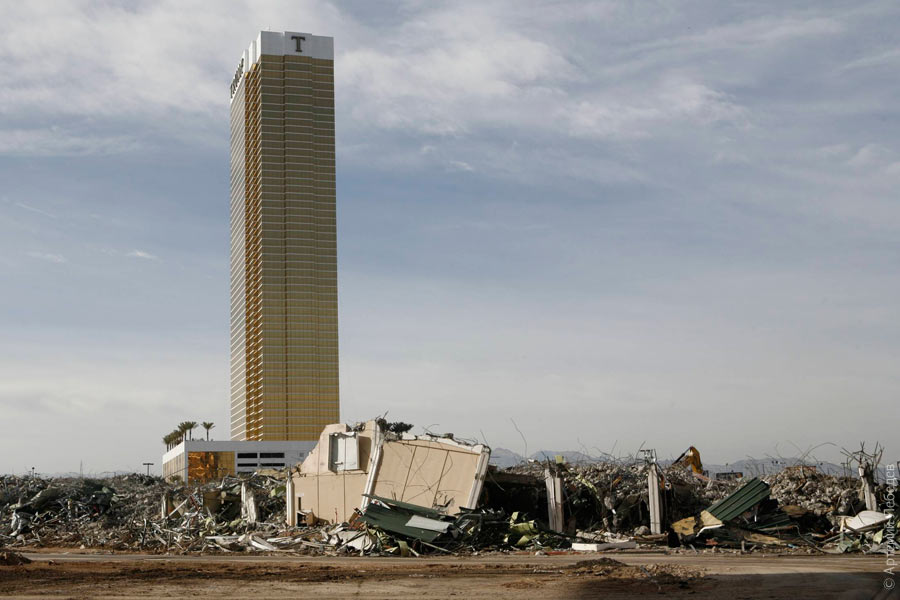 The newsracks on every corner along the Strip are filled with call girl catalogues. 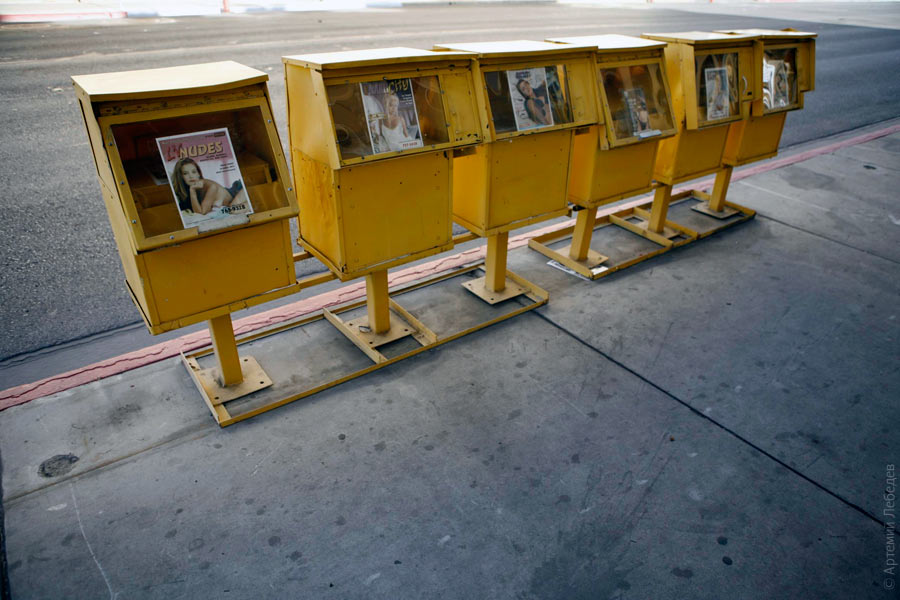 The city is notable only for the record length of its traffic light boom arms (compared to other places in the US). 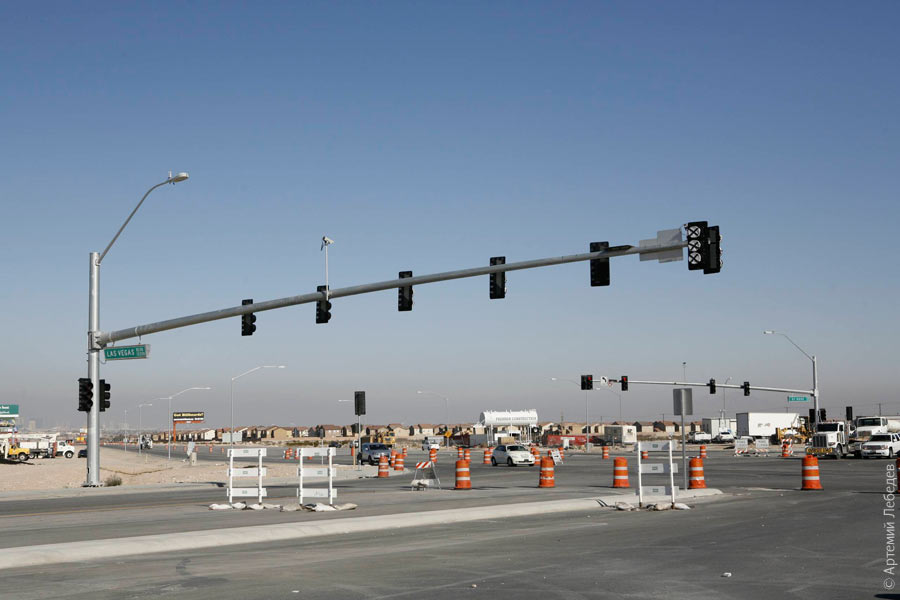 Every cabbie proudly talks about how you can order pizza even at 3 a.m. in Vegas. The local taxis resemble police cars: white body, black fenders. Vegas casinos stopped using token-operated slot machines a long time ago. The sound of jingling coins is now produced by loudspeakers, and the payout is printed on a voucher which must be redeemed at the cashier’s booth. Los AngelesMapI ran into five film sets on my way from the outskirts of the city to the center. The last one was smack in the middle of downtown. Since the downtown area is guaranteed to be dead at night, you can shoot to your heart’s content. Besides the movie set, which had a special wind turbine, nighttime Los Angeles was also memorable for the unbelievable number of rats on the streets. LA looks like all the other places we’ve seen so far: the same dozen skyscrapers in the middle of the city. 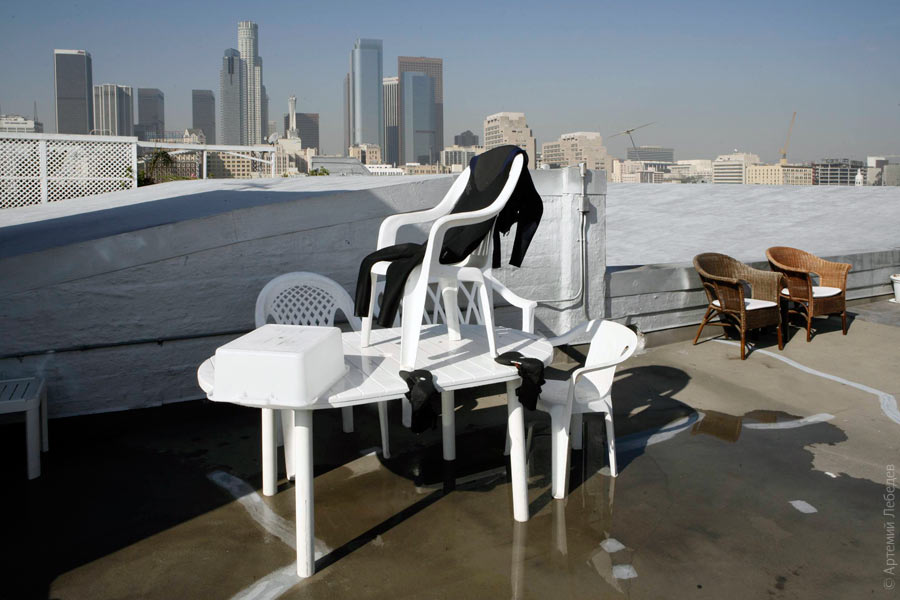 But it’s also different: there’s an elevated level of pretension here. The whole place lives and breathes Hollywood. Even the bums are particularly glamorous. 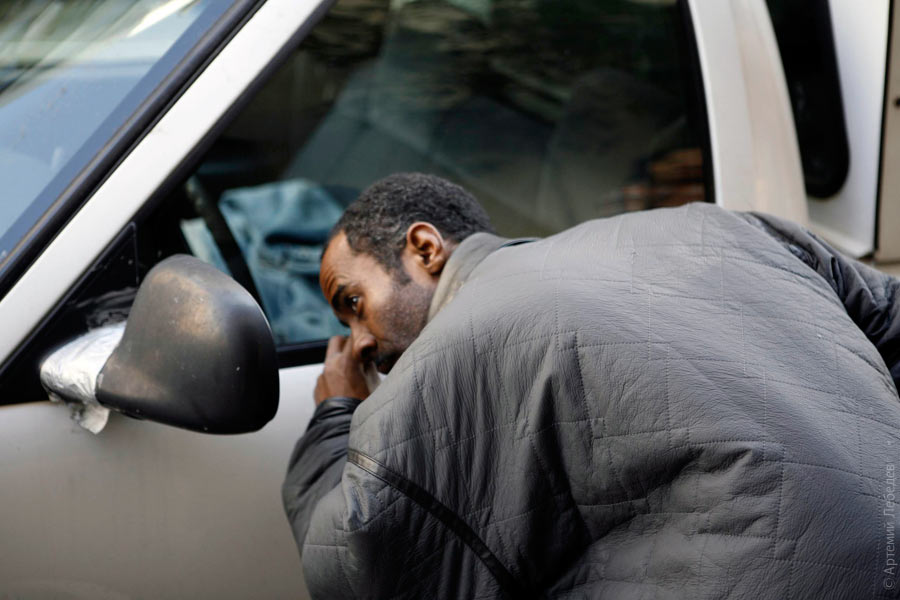 The rest of the world is a gutter, according to LA. 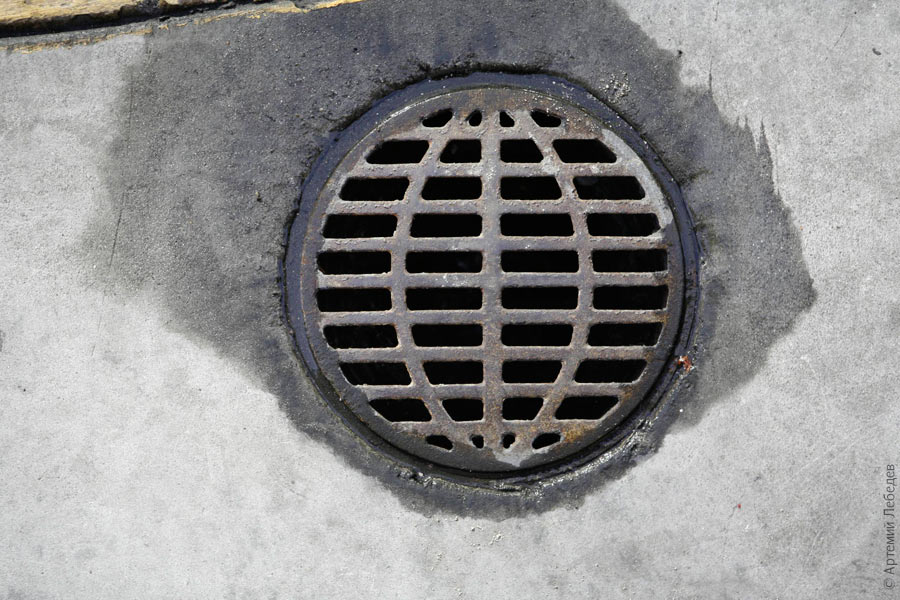 HollywoodMapThe only thing that prevented me from decorating the famous Hollywood letters with a three-letter Russian word of my own was the two-hour uphill hike it takes to get to them. Alas, I just didn’t have the time. 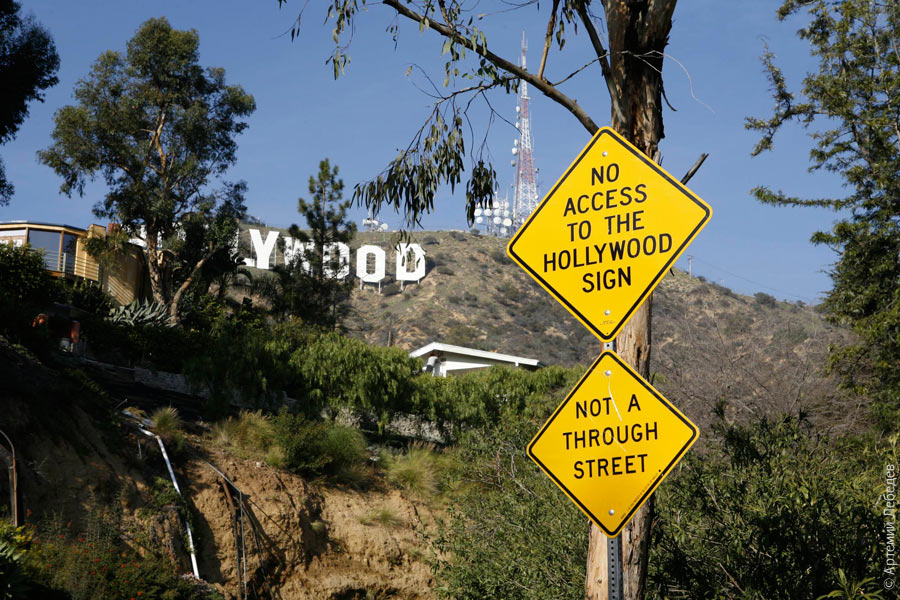 Santa BarbaraMapA provincial resort town where the USS Ronald Reagan was docked at the time of my visit. All the streets were filled sailors, a salute to the Marines hung in every restaurant window. 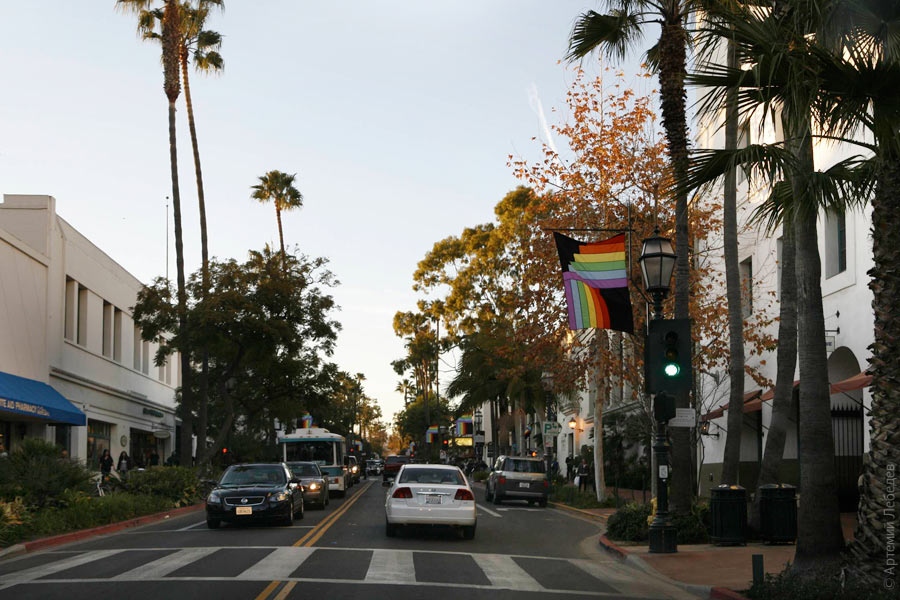 StanfordMapThe campus of this well-known and esteemed university appears to be styled after a three-star Cyprus resort. 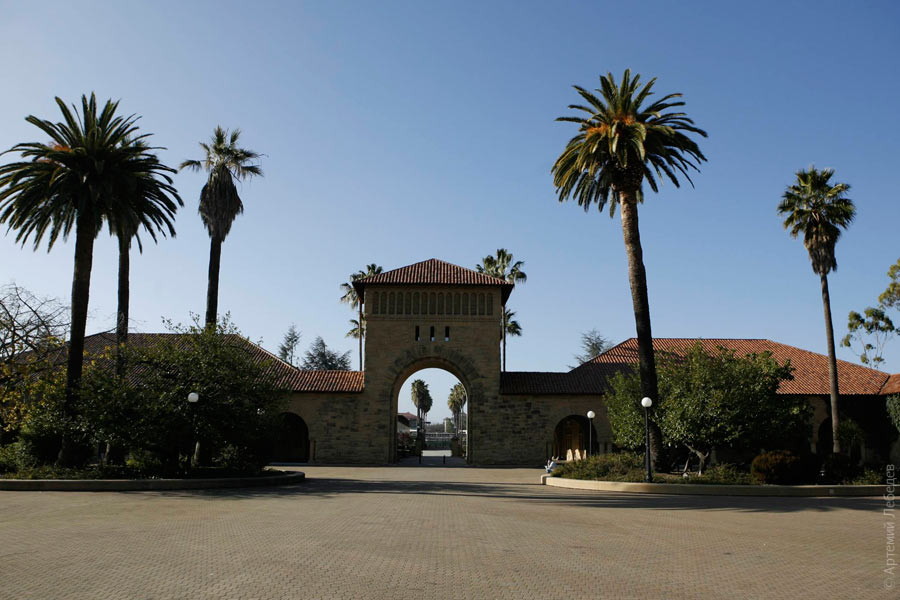 I don’t think I’ve ever visited a more visually tasteless educational institution. Even though the whole place is studded with Rodin sculptures. Then again, I’m not sure Rodin is such a good thing. But it’s interesting that cyclists wear helmets even on the signs here. 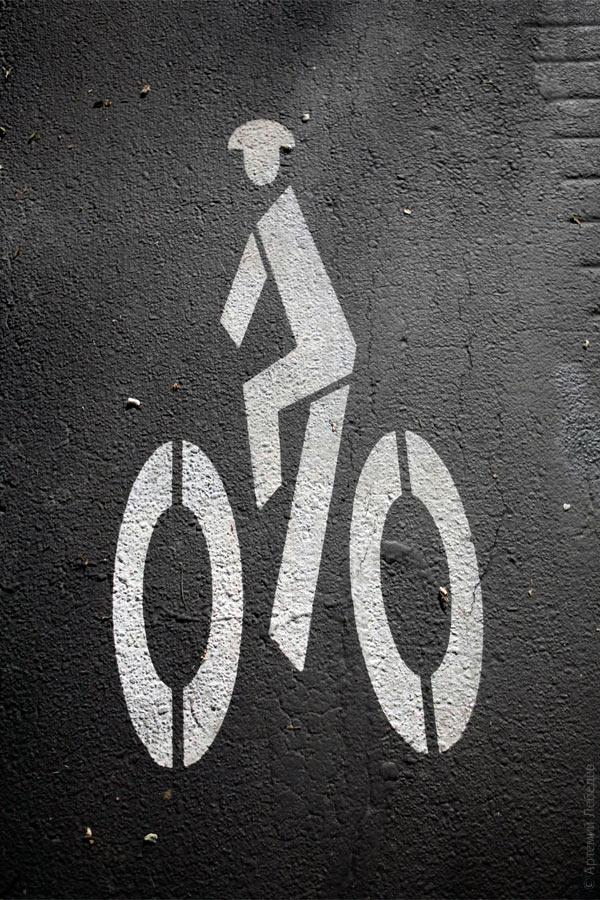 San FranciscoMap
I decided that the Golden Gate Bridge would be the lucky recipient of what Hollywood missed out on.  The city turned out to be so amazing that I stayed for five days instead of the originally planned two. |